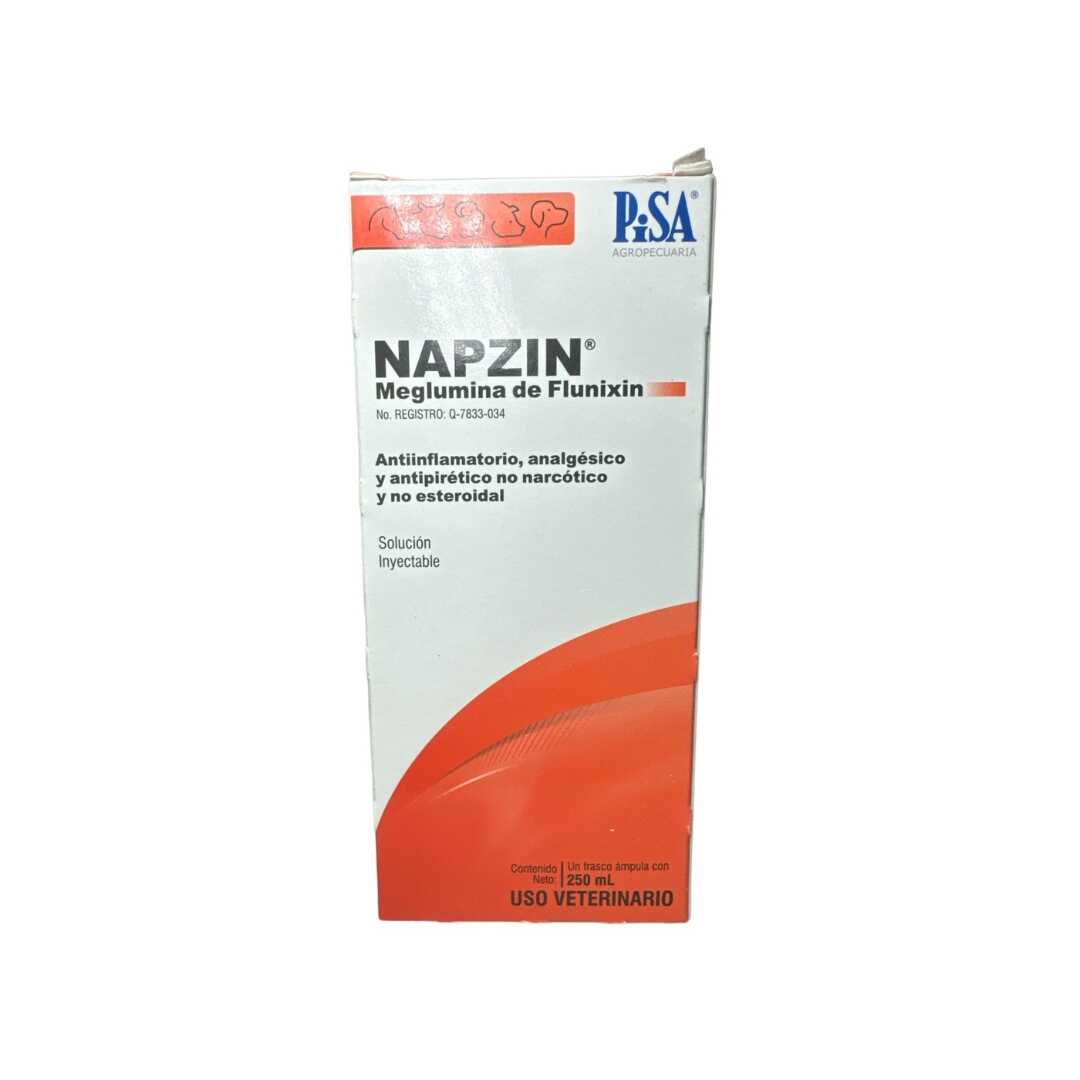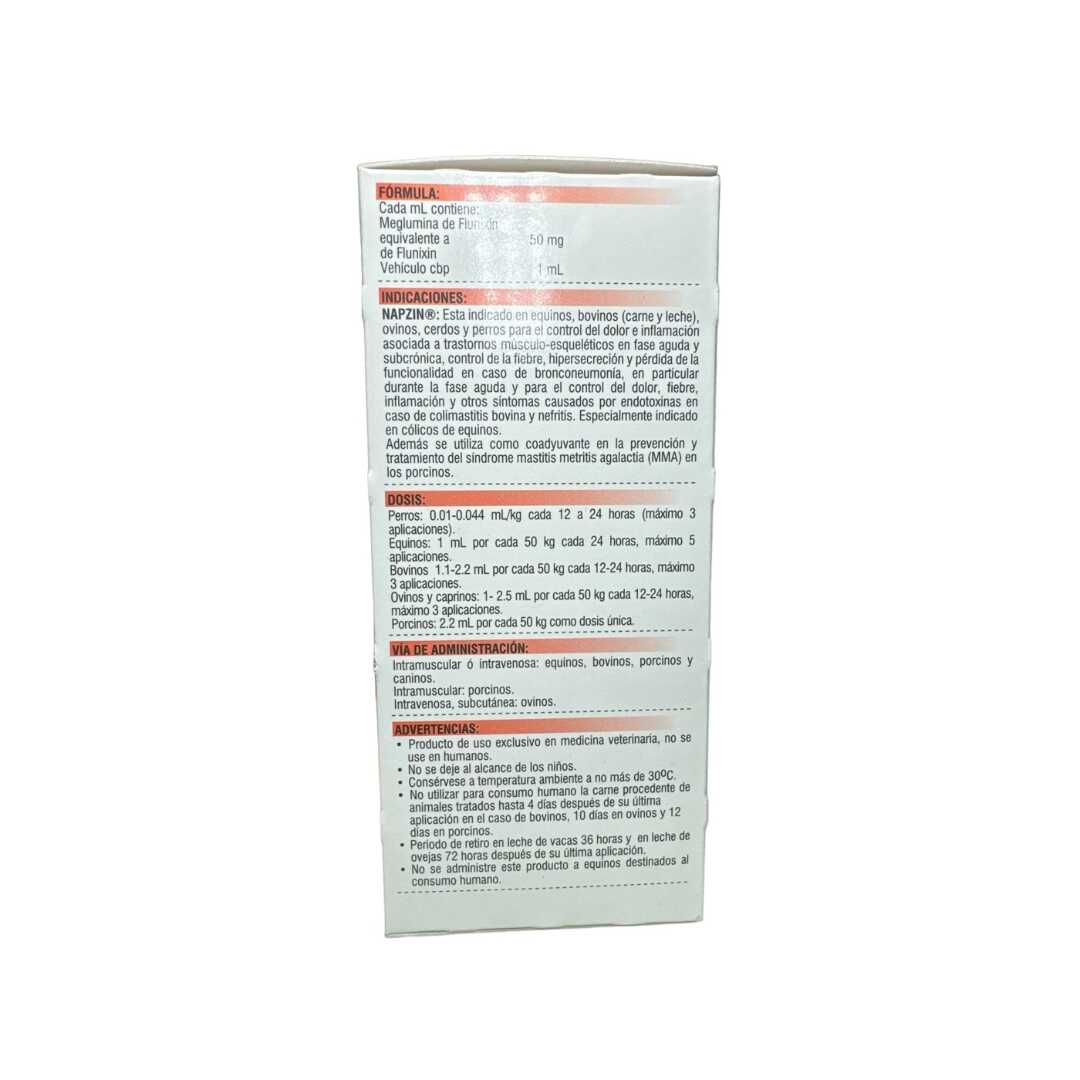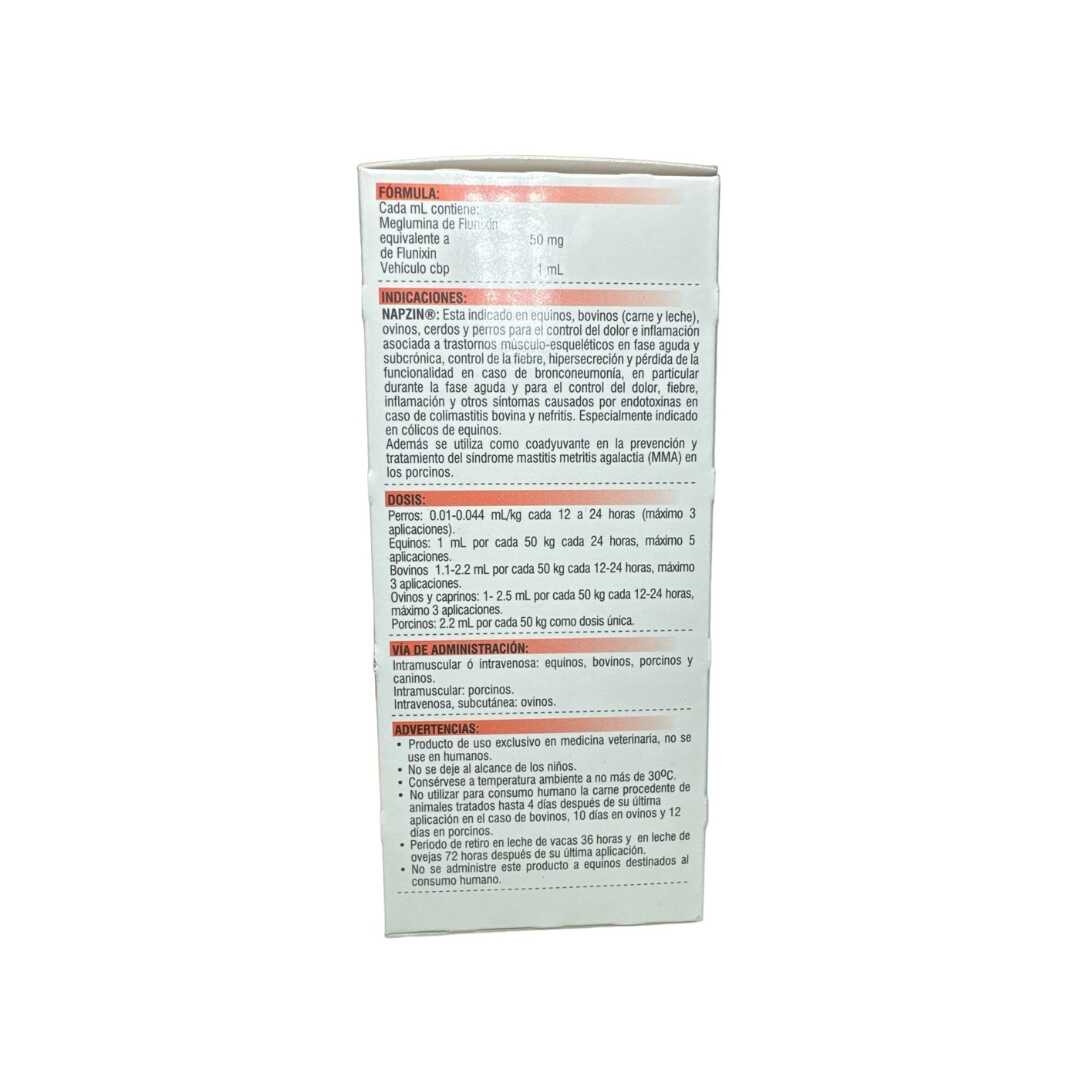PiSA
NAPZIN Meglumine by Flunixin
NAPZIN Meglumine by Flunixin
Credit subject to approval.
Need help? Check our Help section.
44 in stock
Couldn't load pickup availability
NAPZIN is an injectable drug with nonsteroidal analgesic, anti-inflammatory, and antipyretic action. It is indicated for the treatment of endotoxemia and as an adjunct in the treatment of respiratory diseases, as well as skeletal and smooth muscle disorders (muscle and joint trauma, colic, mastitis, post-surgical procedures, trauma, etc.) in cattle, sheep, goats, horses, pigs, dogs, and cats. It is not an immunosuppressant and can be administered to animals of any age.
INDICATIONS
In females at birth
- Prevents fever, pain, or discomfort in newly delivered females, promoting their speedy recovery and increased milk production from the mammary gland without inflammation.
- It reduces inflammation in the female reproductive tract, promoting improved blood circulation, tissue oxygenation, and the delivery of defense and repair blood cells. It improves colostrum secretion during the first 5 hours after application (postpartum), thanks to improved circulation and oxygenation of the mammary gland, as well as the proper delivery of oxytocin, secreted by the pituitary gland.
Bovines
- For the treatment of endotoxemia, acute or chronic respiratory diseases, acute mastitis and pododermatitis, as well as an adjuvant in down cow syndrome and in the control of infectious and/or mechanical diarrhea in calves.
- It is also indicated to relieve disorders associated with skeletal muscle and smooth muscle conditions.
Equines
- Indicated for inflammation and pain associated with musculoskeletal disorders (laminitis), in cases of endotoxemia and for the relief of visceral pain associated with colic, adjuvant in the treatment of colitis and acute respiratory disease.
Pigs
- For the treatment of fever, inflammation of the musculoskeletal system (lameness in general) and any type of pain.
- Prevents the signs and inflammation caused by damage that occurs during the birthing process within the sow's reproductive tract, whether due to the natural delivery of piglets or dystocia.
DOSAGE AND ROUTES OF ADMINISTRATION
The general dose for all species is 1.1 to 2.2 mg/kg, administered intramuscularly (IM) or intravenously (IV) for a period of 12, 24 or 36 hours depending on severity.
Equines
- In cases of colic, laminitis: 1.1 mg/kg daily for 5 days only IV or IM
- As an anti-inflammatory and against endotoxemia 0.25 to 0.5 mg/kg IV.
In equines, the therapeutic response is observed between 15 to 60 minutes after intravenous administration.
Pigs
When to apply NAPZIN ® during the first 12 hours after delivery:
- Improves productive status by increasing performance.
- Improves milk production.
- Improves the weaning weight of the litter.
Routine application of NAPZIN® after farrowing will result in increased milk production in sows and:
- Improved weight gain in piglets (12 to 14 g per day).
- Reduction in mortality per litter (0.55 piglets per litter on average).
- Better piglet weight at weaning (more than 250 to 270 g)
- Best weight of small piglet (100 g at weaning)
- Improved litter weight at weaning (5.5 to 6.28 kg)
Small species
Dogs
In dogs the dose is 0.5 to 2.2 mg/kg IM or IV every 24 hours for a maximum of 2 days.
For eye diseases 0.5 mg/kg every 12 hours (1 to 2 treatments)
For surgical pain 1 mg/kg IV SCO IM
To control fever (pyrexia) 0.25mg/kg
Cats
In cats 0.25 mg/kg SC every 24 hours only repeat the treatment if necessary once more.
PRESENTATIONS: 100 ml, 250 ml
PHYSICAL AND CHEMICAL CHARACTERISTICS: It belongs to the group of non-steroidal anti-inflammatory drugs and is a substitute for nicotinic acid. It is unique in its chemical structure and is recommended to be stored between 2 and 30° C. It is characterized by its high degree of conjugation to plasma proteins. This situation explains the high concentration of the drug in inflammatory fluids due to the extravasation of proteins and fluids from the bloodstream and the acidic pH of the area of inflammation.
NAPZIN® MECHANISM OF ACTION It acts by inhibiting the cyclooxygenase enzymes of the arachidonic acid cascade, suppressing the production of certain chemical mediators (histamine, proteolytic enzymes, etc.) that are involved in the inflammatory process, thus manifesting its analgesic, antipyretic, and anti-inflammatory properties. At low doses, it also reduces thromboxanes (TXs) and prostaglandins (PG12), decreasing signs of endotoxemia, making it an excellent alternative for equine colic.
PHARMACOKINETICS: Flunixin Meglumine is rapidly absorbed after parenteral administration. Its volume of distribution is 0.43 to 0.49 L/kg, and its half-life is 5.7 to 6.2 hours. Plasma levels are reached within 5 to 10 minutes after administration, so its effect is immediate. It is highly conjugated to plasma proteins, favoring its concentration in the area of inflammation. It is excreted in feces, urine, and in very small amounts in milk.
USE DURING PREGNANCY, LACTATION OR LAY
Post-marketing studies in cattle have shown that use of the product within the first 36 hours after delivery leads to a higher incidence of retained placenta. The product should only be administered within the first 36 hours after delivery, after an appropriate evaluation by a veterinarian. Treated animals should be monitored to prevent cases of retained placenta.
Do not administer to pregnant mares or sows.
INTERACTIONS WITH OTHER MEDICINES
It is preferable not to administer NAPZIN to animals undergoing general anesthesia until they have fully recovered.
CONTRAINDICATIONS:
Do not use in animals suffering from heart, liver, or kidney disease, when there is a possibility of gastrointestinal ulceration or bleeding, or when there is evidence of blood dyscrasia. Do not use in animals suffering from colic caused by ileus and associated with dehydration. Do not use in animals suffering from chronic musculoskeletal disorders. Do not use in animals with known hypersensitivity to the active ingredient. Do not use in mares producing milk for human consumption. Do not administer to pregnant mares or sows. Do not use the product within 48 hours prior to the expected date of bovine farrowing. Do not administer to breeding sows, breeding pigs, and piglets weighing less than 6 kg.
OVERDOSE
Overdose is associated with gastrointestinal toxicity
WARNINGS
This product is for veterinary use only. Store in a cool place. Keep out of reach of children.
WITHDRAWAL PERIOD
In cattle, use the meat 24 hours after the last application and in milk 12 hours after the last application. In pigs, use the meat 21 days after the last application.
Consult your veterinarian
Compartir




